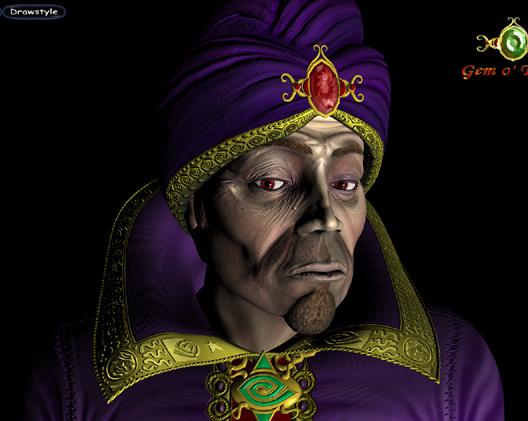Visiontek GeForce3
Introduction
Well folks, the much awaited Geforce 3 review is finally here at Technoyard. It’s been almost 4 months since NVIDIA made their announcement of the GeForce3, their Infinite Effects GPU. Just as you thought we had reached the pinnacle of graphic card technology out comes the GeForce 3, with some of the most remarkable improvements ever seen.
Much is expected from Nvidia’s newest power toy the GeForce3. NVIDIA’s graphics chips for some time has been leading the high end PC market for graphics with their Riva TNT, TNT 2 the G Force and then more recently with the G Force 2. No other manufacturer has been able to match the sheer power and performance of these graphics chips (Except for maybe 3DFx but they are no more) which has propelled them to the wish list of any hard core gamer. NVIDIA has been achieving such performance out of their historically by brute force techniques, by sheer transistor count & complexity rather than efficiency. Their G Force 2 & now the G Force 3 graphics chips have a higher transistor count than the Pentium III itself.
This technique worked fine but it also made their graphics chips specially their high end ones very expensive and consumed a lot of power. But when companies like ATI came up with more streamlined & worthy competitors like the Radeon which relies on efficiency & streamlining rather than the brute force of a high transistor count to achieve its performance, and which mind you came pretty close to beating the GForce 2 in certain arenas, it was time for NVIDIA to think of a different approach. The result is the G Force 3.
Features up close:
The GeForce 3 incorporates a very high transistor count more than the Pentium 4 in fact and advanced streamlining to achieve the performance levels it does. The G Force 3 boasts of the following technologies, which makes it so attractive to us.
- NfiniteFX Engine
- Vertex Shaders
- Pixel Shaders
- Light Speed Memory Architecture
- High Resolution Anti Aliasing
- Microsoft DirectX 8.0 Compatibility
- Worlds Fastest DDR Memory Interface
- High Definition Video Processor
- AGP 4X 2X Texturing Support
- Unified Driver Architecture
- TV Out and Video Modules
The Nfinite FX Engine
I’m sure most of you people have heard a load of this crap, so we’ll be looking at the benchmarks soon. However since we cannot totally ignore these features, we decided to be brief in our explanation.
First it was the Emotion Engine of the Sony Play station and then the “Charisma Engine” of the ATI Radeon. Now we have the Nfinite FX Engine in the G Force 3. Though it does not sound as Romatic as the Graphics Engines of its competitors the NFinite FX Engine by far is the most advanced Graphics Engine ever made and is the defining factor in the performance of the G Force 3. At the heart of the G Force 3 are the programmable Pixel and Vertex Shaders which give Game Developers never before experienced flexibility in developing and incorporating realistic 3D Effects to games.
Basically to understand what the NFinite Fx Engine brings to games you must first understand the concepts behind the Vertex Shader and the Pixel Shader.
Vertex Shader
A 3D image in a scene is brought to life through a complex formation of triangles which in turn makes the 3D object. A triangle is composed of three vertices. A Vertex is where two edges of the triangle meet. A Vertex shader basically adds effects to each vertex adding to the 3D effect of the scene. This procedure involves millions of mathematical calculations and thus is very complex, it needs very fast processors to be able to compute such scenes thus realism in this aspect was limited until the G Force 3 GPU Came along. It incorporates a fully programmable Vertex shader (Embedded in the NFinite FX Engine) with the massive power of the G Force 3 GPU and its 57 million transistors this allows for unprecedented flexibility for game developers who can now develop realistic 3D images, render them real time, and also add specific effect to each vertex using the Nfinite FX Engine. This allows for more complex scenes to rendered as well as to add never before scene affects to 3D scenes, and bring 3D a step closer to reality. You will see examples as you read ahead with our review
Pixel shader
Now we come to the other aspect of the Nfinite Fx Engine the Pixel shader. I guess a pixel needs no introduction. It’s basically the smallest element that makes up an image. Pixels determine the look of the image. NVIDIA introduced per pixel shading with the G Force 2 GPU, and the G Force 3 takes it to the next level. The G Force 3 has a programmable pixel shader which lets the game developed determine how a pixel should be shaded and not the GPU as in traditionally would by selecting the shading from a pre set palette. This sets the stage for images to achieve realism as never before.
Per pixel reflection

Refraction:

Shades:

The introduction Programmable pixel shader and the programmable vertex shader to game developers is like the invention of the wheel to human kind. Never before were they able to use their creative talent to such effect and implement it with such ease and flexibility. Games will never be the same after the GeForce 3.
